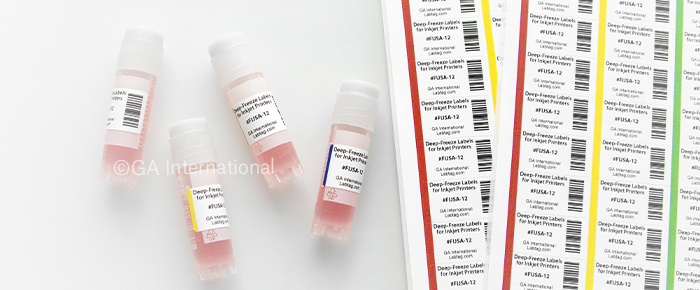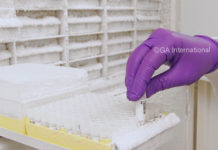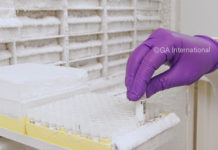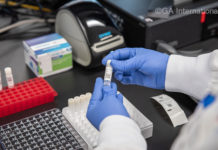Customer Background
The Centre of Excellence in Youth Mental Health (CEYMH) is part of the Douglas Research Centre, affiliated with McGill University and the Montreal West Island IUHSS. Its research covers a host of topics, from neurodevelopment, mental health, aging, cognition, and Alzheimer’s disease, among others. The lab of Dr. Lena Palaniyappan, professor and inaugural director of the CEYMH, uses a neuroscience approach to inform early interventions for youth with severe mental illnesses, such as psychotic disorders, bipolar disorder, and depression. Their approach is multidisciplinary, not relying on a single set of techniques, but instead utilizing all accessible tools and collaborations to answer pressing questions regarding the pathophysiology of mental illness and its treatment. A major program spearheaded by Dr. Palaniyappan is the Behavioral Development, Long-term Outcomes, and Opportunities to Optimize Youth Mental Health Trajectories program, also called BLOOM. Youth participants enrolled in BLOOM provide scientists not only with information about their mental well-being but also with blood, saliva, and cheek epithelial cell samples, which are collected and stored cryogenically for later analysis.
The Challenge
In Dr. Palaniyappan’s lab, the members at the CEYMH had previously relied on handwriting on tubes to identify them and had not yet adopted any label printing and identification system. However, relying solely on handwriting created several challenges, the most significant being sample mislabeling and misidentification, particularly on the sides of small tubes. To streamline the identification process and reduce handwriting, the team decided to transition to a barcode system for their sample management. These new barcode labels needed to withstand temperatures as low as -80°C for long-term freezer storage, which marked a significant improvement in the lab’s sample management efficiency. Thus, the members of Dr. Palaniyappan’s lab consulted an expert manufacturer and provider of identification solutions to integrate a more efficient sample management system, to enhance their process and avoid the pitfalls of the current labeling workflow.
Tailoring a Solution
To enhance the sample identification workflow in Dr. Palaniyappan’s lab, the team consulted GA International for expert guidance in selecting the most suitable identification solution from LabTAG. A comprehensive, step-by-step implementation process was developed, beginning with a detailed evaluation of the label materials and their compatibility with the lab’s inkjet printing equipment. This evaluation focused on key factors such as print clarity, durability, and adhesion to ensure the labels would perform optimally under the lab’s specific conditions. Additionally, the process included real-time technical support, thorough cryogenic label testing, and an assessment to determine if custom labels were needed. Samples were provided free of charge for evaluation by the CEYMH prior to purchase, ensuring the final solution was perfectly tailored to the lab’s needs.
The lab implemented inkjet-printed deep freeze labels (FIJSA-32WH) with barcodes to encode sample information, along with 11 mm cryogenic color dots (LT-11A) for 2.0 mL Cryo tubes. The color dots, placed on the tops of the tubes, allowed lab personnel to handwrite sample ID numbers, with the color indicating the sample type. After labeling, the tubes were filled with biological fluids, frozen, and stored at -80°C for long-term storage. This system greatly enhanced the lab’s ability to digitize sample data and streamlined its workflow, while also minimizing room temperature exposure, reducing the risks of sample degradation.
In addition, color-coded and barcoded labels made organizing samples by type, date, and volume easier during storage, improving access and retrieval. Though there was an initial adjustment period, the lab quickly recognized the system’s advantages. Adriana Redensek, research coordinator at the CEYMH, stated: “Color-coded labels simplified locating and storing samples, while reducing the time spent labeling each tube. This helped eliminate ambiguity about sample types, ensuring accurate identification and reliable results.”
Conclusion
Overall, there was a qualitative improvement in workflow efficiency, sample identification accuracy and consistency. By working with GA International, Dr. Palaniyappan’s lab was able to rapidly implement a customized identification solution consisting of color-coded dots and inkjet printable cryogenic labels, significantly reducing reliance on handwriting and improving sample identification.

A heartfelt thank you to the incredible BLOOM team at the Douglas Research Center for welcoming us into your space and giving us a glimpse into the important work you do. It was inspiring to see how our labels support your research in real-world applications. We’re especially grateful for the trust you’ve placed in us over the past 10+ years. Every label has a story, and we’re proud to be a small part of your journey.




